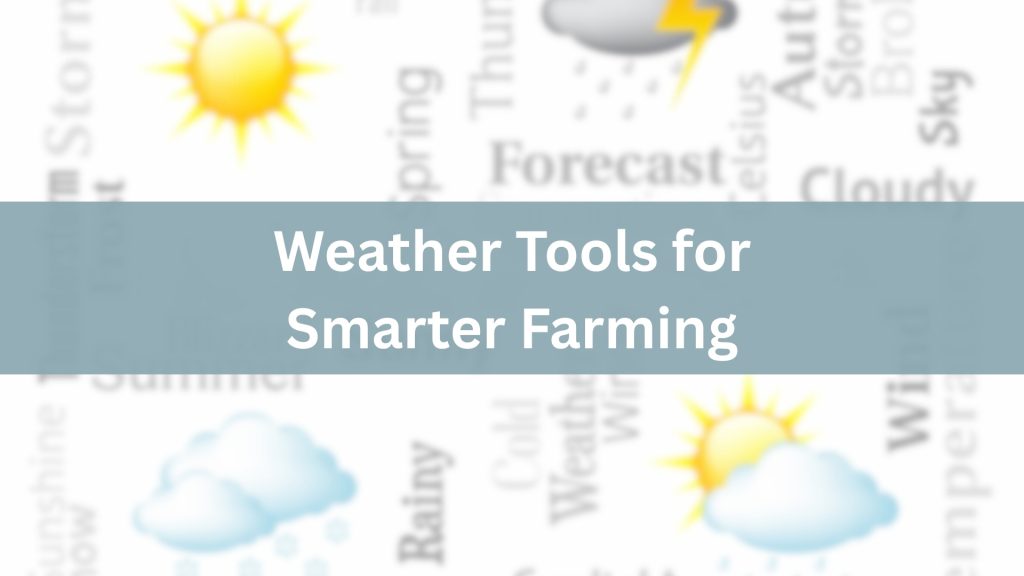
Weather is one of the most unpredictable yet critical factors in farming. A well-timed rain can boost yields, while an unexpected frost or drought can lead to significant losses. That’s why having access to accurate, agriculture-specific weather data is essential for making informed decisions.
Thankfully, there are several reliable weather tools available to help farmers stay ahead of changing conditions. Here’s a look at some of the top weather resources for agriculture and how they can support better planning and risk management.
Top Weather Resources for Farmers
NOAA’s National Weather Service (weather.gov)
The National Weather Service (NWS) provides general forecasts, severe weather alerts, and radar imagery. It’s a go-to resource for real-time weather updates and warnings that can help farmers prepare for incoming storms, droughts, or extreme temperature shifts.
Climate Prediction Center (cpc.ncep.noaa.gov)
For farmers looking at long-term planning, the Climate Prediction Center offers extended climate outlooks. These projections can be helpful for deciding on planting dates, irrigation schedules, and crop selection based on seasonal trends.
RMA Rainfall Index (rma.usda.gov)
Farmers with Pasture, Rangeland, and Forage (PRF) insurance can monitor rainfall data through the RMA Rainfall Index. This tool helps track precipitation levels, which is crucial for managing forage and grazing land.
Ag-WX (ag-wx.com)
Ag-WX is an agriculture-specific weather tool offering detailed precipitation and temperature maps, along with long-range forecasts. Farmers can use these insights to make informed decisions about irrigation, fieldwork, and harvest timing.
Why Farmers Should Use Multiple Weather Tools
No single weather forecast is 100% accurate, so using multiple sources can help you get a more complete picture. Comparing forecasts from different tools allows you to identify patterns and make more confident decisions about planting, irrigation, pest control, and harvest timing.
Final Thoughts
Staying informed about the weather is a key part of risk management in agriculture. Tools like NOAA, the Climate Prediction Center, the RMA Rainfall Index, and Ag-WX provide valuable insights that help farmers plan ahead and protect their crops.





























